Tips for Pruning Plants, Shrubs and Trees

Last updated September 7, 2023
When you prune your trees and bushes, the removal of diseased, damaged and dead debris encourages airflow and healthy growth. It also shapes unruly plants and overall improves their health.
Pruning is a fairly simple task as long as you approach the chore with the right tools, and during the right season for each plant.
Use the tips in this guide to prune the trees, shrubs and perennials in your landscape.
Difficulty:
Intermediate
Duration:
2-4 hours
Table of Contents
How to Prune
Spring Pruning Tips
Summer Pruning Tips
Fall Pruning Tips
Winter Pruning Tips
Hedge Pruning Tips
How to Prune
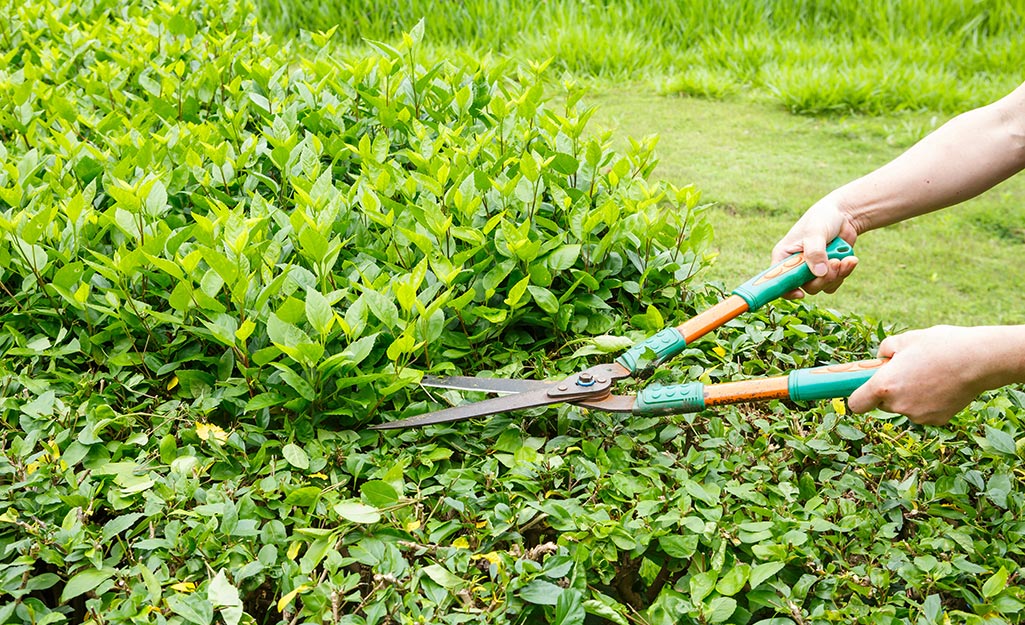
Any time you prune, make proper cuts so you won't damage your plant.
- All cuts should be made on the branch side of the stem collar, which grows out from the stem at the base of the branch. This protects the stem and other branches that might be growing, and allows the tree to heal more effectively.
- To prevent tearing bark during a cut, use the three-cut method: First, make a small wedge-shaped cut under the branch on the branch side of the stem collar. Next, cut off the branch 6 to 12 inches from this wedge, leaving a stub end. Finally, cut parallel to and just on the branch side of the stem collar as close to the tree’s trunk as possible.
- Use the right tools: loppers are ideal for trees, climbing vines and large shrubs. For heavy-duty cuts, loppers provide greater leverage with minimal effort. Anvil blades have a single sharp blade that crushes and tears off the stem, making it ideal for blunt cuts of dead branches and dry, hard, old growth. Bypass models have sharp blades that sweep past the lower sharpened jaw for a precise cut that’s ideal for new growth.
- Consider the size of your plant: use pruning shears for cuts up to 3/4-inch in diameter, lopping shears for branches up to 1 1/2 inches in diameter and hand and pole saws for branches up to 4 inches in diameter.
- When pruning flowering plants, pinch off spent flower blooms before trimming. This is known as "deadheading."
- Don’t wait until a plant is overgrown. Pruning should be routine and part of your garden’s regular maintenance.
Spring Pruning Tips

It’s critical to prune at the right time to help your trees and shrubs look their best. Prune according to the labels on your plants, and follow the general rules of thumb below.
Flowering shrubs, hedges and perennials explode with spring color. To keep the flowers coming year after year, give your plants a little TLC right after they bloom.
- Last year’s perennial plants will need a spring trim to encourage healthy new growth.
- Spring is the time to shape unruly plants, as all harmful growth should have been removed in the fall.
- Deadhead spent blooms to encourage a fresh spring start.
Summer Pruning Tips

Pruning is usually associated with spring and fall, but it’s also an important habit to cultivate in the summer.
- Don’t neglect your hydrangeas. First determine if your hydrangea blooms on old wood. In other words — does it bloom in early summer and peter out by midsummer? For larger, more plentiful blooms next season, prune as the flowers begin to fade.
- Prune edibles in early summer for larger, healthier fruit. Dormant pruning invigorates a fruit tree, while summer upkeep allows for better airflow and light penetration. The idea is to thin out a dense canopy, especially in older trees. A tree that isn’t properly trained will have upright branch angles that may result in serious limb breaks under a heavy fruit load.
- Don’t go clip crazy. For some species, trimming in the summer can actually deter growth. New shoots, especially, may not have time to mature before cold weather sets in. Be sure to keep a garden journal detailing each plant’s pruning schedule.
- You don't usually need to prune trees in summer. Summer pruning is only advised to remove water sprouts and suckers if they are beginning to grow near the base or trunk of the tree.
Fall Pruning Tips
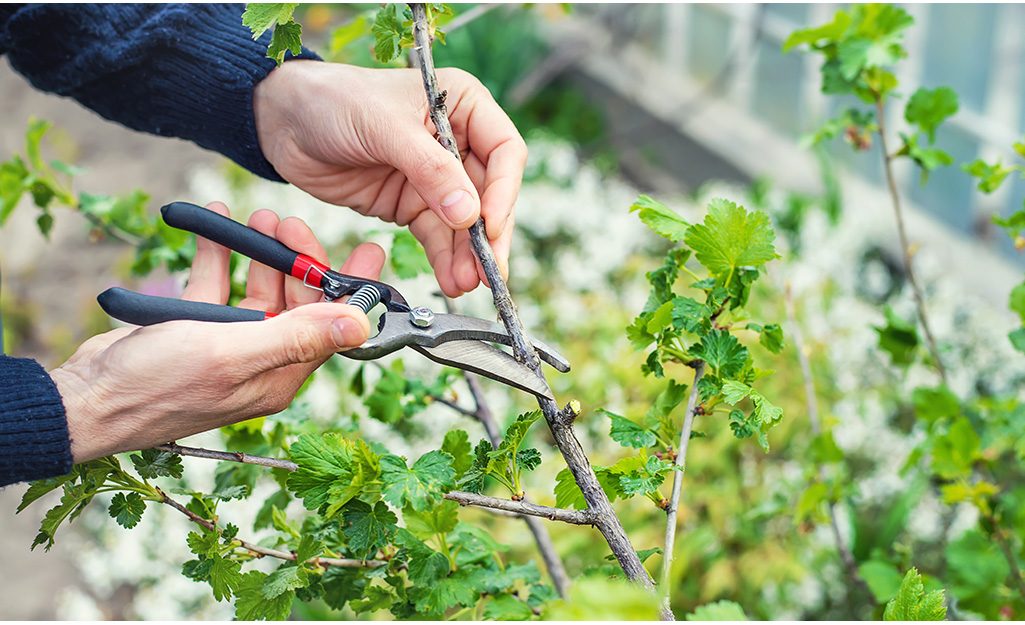
Autumn and spring are traditional seasons for landscape and garden pruning, but it’s important to recognize the different demands placed on the activity during each season.
One reason for pruning in fall is what’s often called “corrective pruning.” Essentially, it means removing branches that interfere with the rest of your landscape, such as those that are interfering with other plants or that might cause damage to your home during storms.
Another reason is to unburden trees of damaged or diseased limbs. As those may pose a danger to the tree itself, pruning them will actually contribute to the overall health of the plant. Judicious removals can also let in more light and reduce the need for pesticides.
- Fall pruning should focus mostly on improving growing conditions for next year. Resist the urge to do any serious shaping until spring.
- Wait until the leaves have fallen from deciduous trees. Cuts made in early fall tend to heal slower than cuts made later, leaving your tree exposed to disease for longer. Moreover, the structure of a bare tree is easier to see, so you’ll be less prone to mistakes.
- Dead or diseased branches are safe to prune right away.
- Start small, with a set of hand pruners, trimming smaller branches. Pay particular example to young trees. Since these more precise cuts will heal more quickly, the more work you can do with hand pruners, the better.
- The angle formed by a branch is an indication of its likely strength. Narrower angles are generally weaker than wide angles. Since the pressure exerted by storms and snows can break these limbs, pruning the weaker limbs can help protect your home from winter damage.
- Rhododendrons, azaleas and other spring-flowering shrubs, as well as maple, birch, dogwood, walnut and elm trees can be pruned in fall.
Winter Pruning Tips
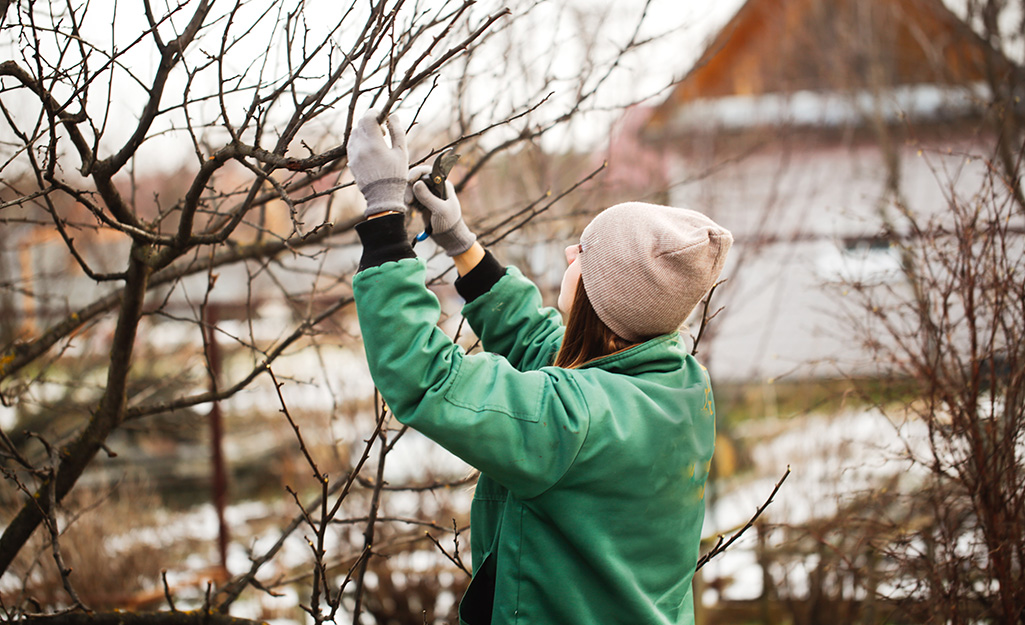
Trees and shrubs can be invigorated by pruning during winter. A sensible trim helps plants produce more flowers and ward off pests and diseases.
Prune deciduous plants while they are dormant in winter to encourage new growth in spring. This is a great time to prune many trees because, in their dormant state, it is much easier to see the branch structure. Fruit trees are best pruned mid-winter to open the tree to more light in the growing season, while avoiding diseases that may result from in-season pruning.
A good way to start winter pruning is to remember the 3D rule. Is it dead, damaged or diseased? Branches that fall under any of these three classifications should be removed before any other pruning takes place as it could easily change the shape of the host tree or shrub. Leaving these branches in place increases the potential for further damage as well as insect infestation.
Trees such as birch, maple, dogwood, elm and other so-called “bleeding trees” lose a great deal of sap after pruning in winter, but aside from being a bit unsightly, there is no harm done to the tree.
- A good rule of thumb is to prune no more than 1/3 of the branches that produce new growth.
- Prune azalea bushes before new growth shows up. Minor shaping of overgrown limbs is usually all that is necessary.
- Prune blueberries in the coolest part of winter. The most productive branches are those that are only a year or two old, so annual pruning can be a big help. Stems older than 3 years should be cut to ground level.
- Cut butterfly bush (buddleia) to the ground in winter and it will regrow in spring in plenty of time for plentiful summer blooms.
- Prune crape myrtles as desired during the winter months. When properly acclimated, pruning is strictly cosmetic and not generally necessary for the health of the tree.
- When pruning hydrangeas, do a little homework before you prune. The most common types including blue, pink and white mopheads, and oakleaf hydrangeas bloom on existing “old” wood and should be left alone in winter. White flowered varieties like “Limelight” bloom on new wood and can be pruned in winter. “Endless Summer” hydrangeas bloom on both old and new growth.
- Avoid pruning most oak trees in the winter when they are more susceptible to Phytophthora ramorum, the plant pathogen that causes Sudden Oak Death, or SOD.
Hedge Pruning Tips
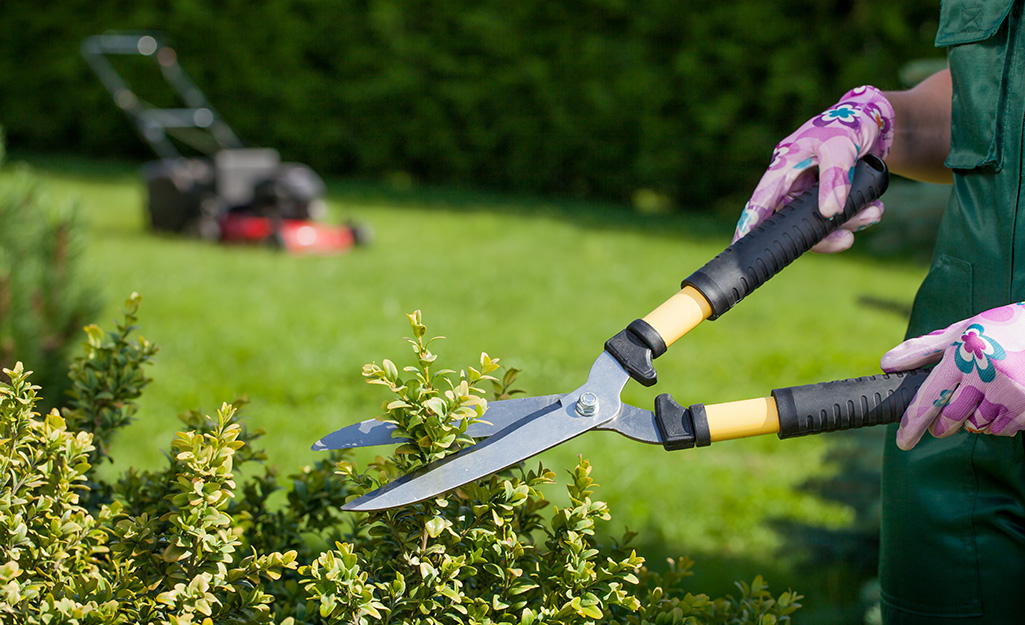
Hedges need special pruning attention.
- Use hedge trimmers to make your hedge wider at the base than the top, so rain and sun can reach the lower growth.
- Don’t prune hedges straight up and down, or they’ll look like walls.
- You may need to trim your hedges more than once a year, if you live in a warm climate. Pruning at the wrong time might remove next year’s flowers.
- Cut dead, diseased and damaged wood using sharp loppers or hand pruners.
- Prune branches that grow inward to allow the shrub to get more sun and air.
Perennial Pruning Tips
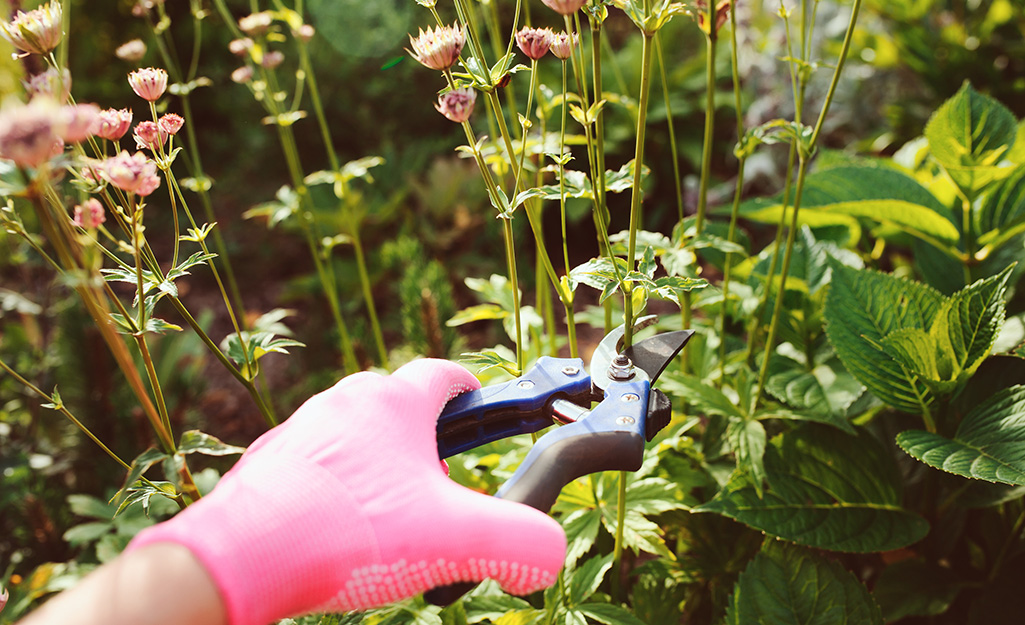
Perennials benefit from pruning in season and when dormant to ensure years of enjoyment.
- Begin by pulling out any loose, dead stems.
- Use a sharp knife or pruning shears to cut the dormant stems close to the base of the plant. Avoid cutting new shoots.
- Tidy up around your perennials by picking up or raking any plant debris.
- Add a couple inches more mulch, if needed.
- Most of all, don’t stress. A few pruning mistakes will grow back.
Tips for Pruning Trees
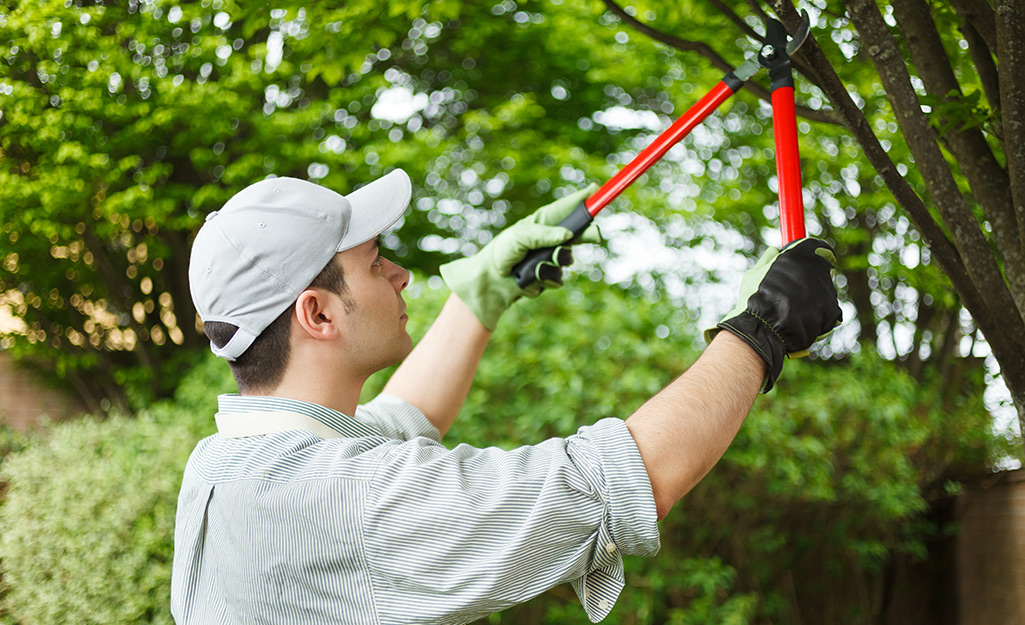
Be careful pruning trees and work only on what you can safely reach. For severely damaged and dead trees, consult a certified arborist.
- On young trees, protect the leader, or main trunk, from competition. Remove any second leaders that are crooked, defective or lopsided.
- When branches rub or cross each other, remove one.
- Remove suckers or side shoots from the base of the tree using a knife or scissors.
- Prune lower limbs to expose more trunk.
- Lightly prune upper limbs to enhance the natural shape.
- Never top or drastically cut back trunks with a chainsaw because it ruins form and causes problems. There is one exception to this rule, the chaste tree (vitex). It can be trained as either a multi-trunk tree or cut back hard each year so it is more shrub-like in form.
- For best tree health, routinely prune and remove dead, diseased or damaged wood.
- When removing an entire limb, avoid cutting too close to the trunk. Most limbs form a natural collar at the fork. Cut outside the edge of this bulge opposite from the trunk.
- When removing a branch, start by making an upward cut about a third of the way through the branch, an inch or so from the collar. Then, starting another inch or so farther out, cut downward to complete the cut. Once the branch is removed, trim the remainder back to the collar. As with any pruning you do, take safety precautions to avoid being struck by falling limbs.
- If you notice a young tree starting to split into two trunks, settle on making a hard decision: cutting away one of the trunks. Allowing both to grow will weaken the overall strength of the tree, making it prone to collapse. Waiting until the tree is older will only make this necessary job tougher on you.
How to Prune Crepe Myrtles:
Crepe myrtles are beautiful trees, but can be very tricky to prune. If done incorrectly, you’ll end up with a knotted, disfigured tree that spoils the look of your yard.
- Proper pruning should go unnoticed to keep these graceful trees looking natural. Start slowly and prune less in the beginning. You can always go back and cut more.
- Remove new branches called suckers coming up from the base. Continue cutting suckers throughout the season.
- Cut side branches growing from the main trunks up to four feet off the ground. Don’t leave stubs.
- Prune all branches above four feet growing toward the center of the tree. Always cut back to a larger branch of the trunk. Don’t cut to see over branches, but to see through them.
- Cut off branches that cross each other, rub against the trunk or are dead. Step back, look for and cut off any distracting branches growing at awkward angles.
If you need some extra help trimming trees, consider renting a chainsaw or power pruner with our tree care rental to get your project done. Use once, then bring it back - no maintenance required.



























